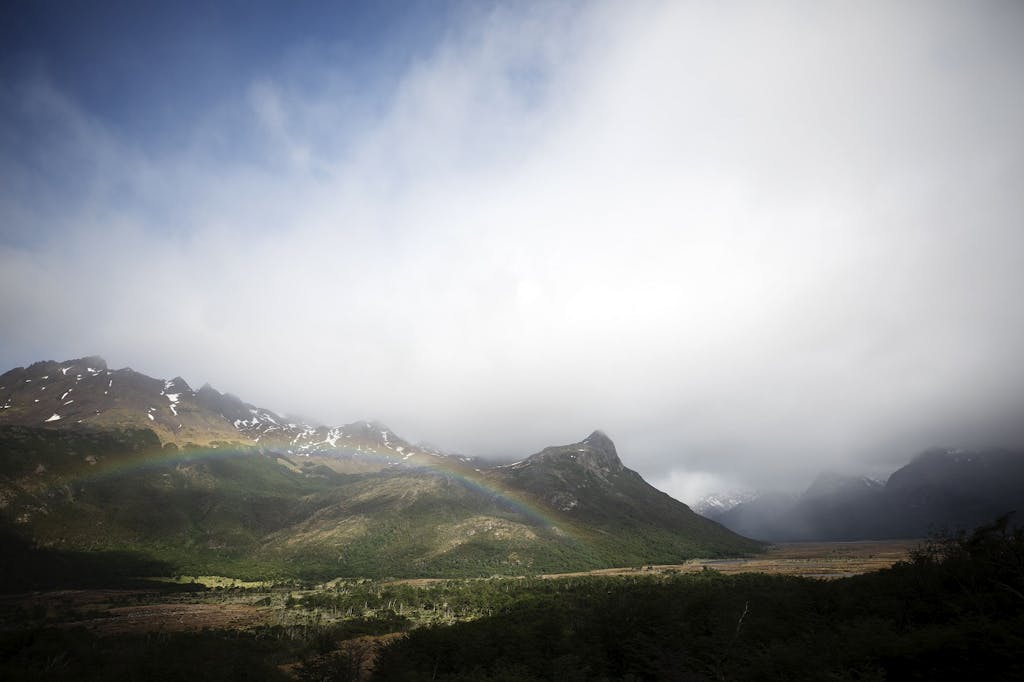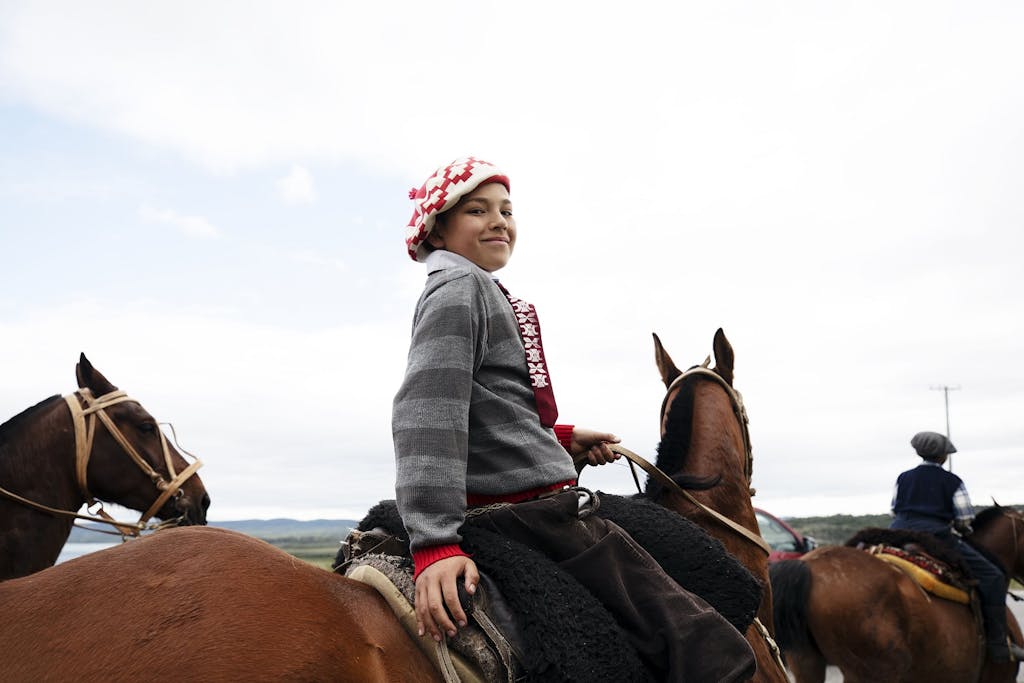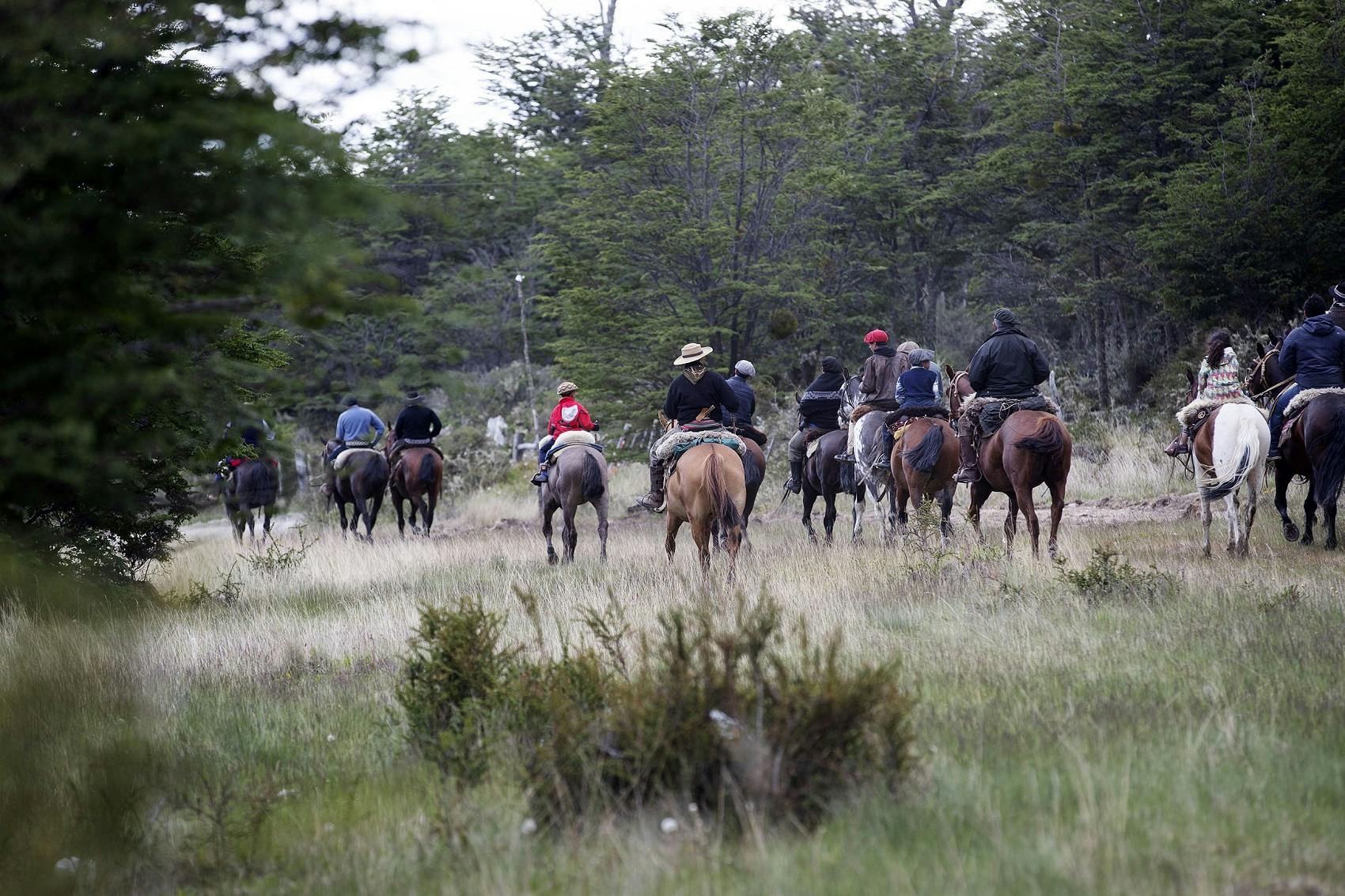From Pampas to Mountains: Exploring the Life and Times of Argentine Gauchos
Summiting 7,750-foot-high Cerro Negro Pass on horseback is an intense experience. First, you must climb out of the Desecho Valley, switchbacking on narrow horse trails along the steep mountainside. Then you follow a rocky ridge and emerge onto a clearing — the summit. At times, the wind whips so hard you’re forced to lay down on your horse and hug its neck, lest you be thrown off.
My journey across this pass in Argentina’s Patagonia had those forceful winds. Luckily, my horse was stable, holding her ground against the gusts as we surveyed the land of Argentine gauchos, where we were mere guests, following our gaucho host through a “cordilleras,” a series of parallel mountain ranges with plateaus between them.

Exploring Patagonia’s gaucho trails
Gauchos, cowboys of the Pampas and the Andes, have followed these horse trails through Patagonia for nearly 300 years. They were initially nomads, hunting wild horses and cattle to sell for the hides. Their homes in the Patagonian wilds were mud huts called “puestos” that were nothing more than a modest shack with a roof and a stack of hides to sleep on. By the end of the 1700s, almost all of the wild horses and cattle were corralled onto ranches and controlled by the local “estancias,” or estates run by the wealthy. The gauchos then became hired animal handlers for wealthy landowners and their private estates.
In the early 1800s, the gauchos fought in the War of Independence, supporting Argentine patriots in their quest for freedom from Spanish rule. They ultimately won their pursuit of independence from Spain, thanks in part to the Argentine gauchos, whose horsemanship and local knowledge helped carry many battles. Once the war ended, the gauchos returned to their lives working at the estancias until industrialization forced many of them out of a job. The gauchos moved to the cities, only returning during summer to help estancias move their herds to summer grazing lands.
That rotation continues today; Argentine gauchos working urban jobs in nearby cities and towns usually begin collecting herds of goats and cattle at lower elevations in December and then bring them up to graze in the high mountainous areas. There are many routes the gauchos use to bring the herds to the summer pastures. We followed a route that began in Neuquén at Estancia Ranquilco, a horse ranch and lodge built by the gauchos and used as a home base for pack trips along the gaucho trail. To get to the high camp’s puesto, we first had to cross the cordillera, riding between six and seven hours a day for almost a week, stopping for picnic lunches and camping at night with dinner and breakfast around the fire.

Trouble on the trail
The Patagonian landscape is rugged and secluded. When something goes wrong, the best bet is to either find the nearest puesto or hope another gaucho crosses your path. On the second day of my trip, we rode alongside a lightning storm a bit off in the distance — and the next day, we met a gaucho who warned us that something was wrong. We had our horses take off at a trot until we reached a clearing in the brush. The gaucho motioned to the left to show us: The green of the valley was scorched black and smoldering, slowly creeping down and edging destruction through a veil of smoke. Lightning hit there yesterday, he said, and started a wildfire that decimated this portion of the landscape.
We planned to camp nearby that night, so we consulted with the gaucho to see if it was safe. He assured us that the river that ran along the base of the valley was just wide enough and deep enough to stop whatever remaining flame tried to cross. We rode on to our camp.

Escaping the modern world
I’d eaten goat before, but never quite like this. We’d arrived at the high-country puesto earlier in the day, where Raul and Eduardo, our gaucho hosts, waited to welcome us. To honor our visit, our hosts would cook a spit-roasted goat using a traditional gaucho cooking style: a barbecue called an “asado.” The meal is a celebration and a mainstay at any gathering in Patagonia.
The day-long process begins when a gaucho picks a goat from the herd and slaughters it. Then it’s dressed to be cooked: skinned, cleaned, threaded onto a metal cross and rubbed down with water and salt. The cross is stuck upright into the ground next to a roaring fire, and the goat slow-cooks for hours until the meat practically falls off the bone. When it’s ready, you eat chunks with freshly made fry bread, onion salad and chimichurri. I sat down with my meal on my lap, surrounded by my fellow travelers. Without modern distractions to get in the way, you begin to experience life on a much more personal level.

A simpler way of life
Every gaucho in Patagonia has a radio and listens to it all day long. It’s the only way — in a landscape with no cellphone service or internet — for them to receive communications from the world outside their puestos. Twice per day, they hear announcements. Raul has been invited to a party on Saturday. Eduardo’s son broke his leg, and he needs to get home.
It’s one of the hallmarks of a world without technology: News takes longer to get to you, and you take longer to react. And while sometimes that might be less than ideal, it also allows you to take in life like the gauchos do: at a slower pace, with a much more observant eye. On the gaucho trail in South America, it’s not about checking Facebook or texting your family and friends. It’s about taking in spectacular scenery. Enjoying the sun shining on your face. Spending time with friends around a campfire, sharing food, drink and stories. And knowing that, while there may be some responsibilities — like jumping on horseback to catch a stray goat or pony — the real joy in life stems from nature, simplicity and togetherness.

Ready to learn more about the Argentine gauchos who ride the pampas of Patagonia? Explore Silversea’s South America itineraries to see them in action.
